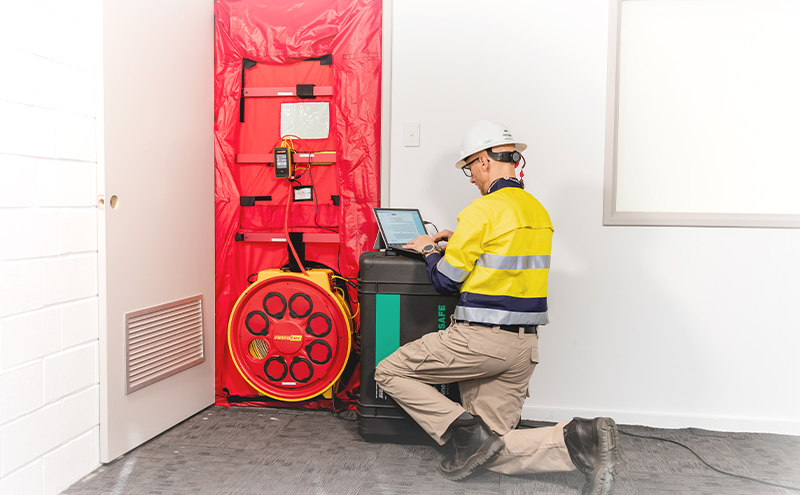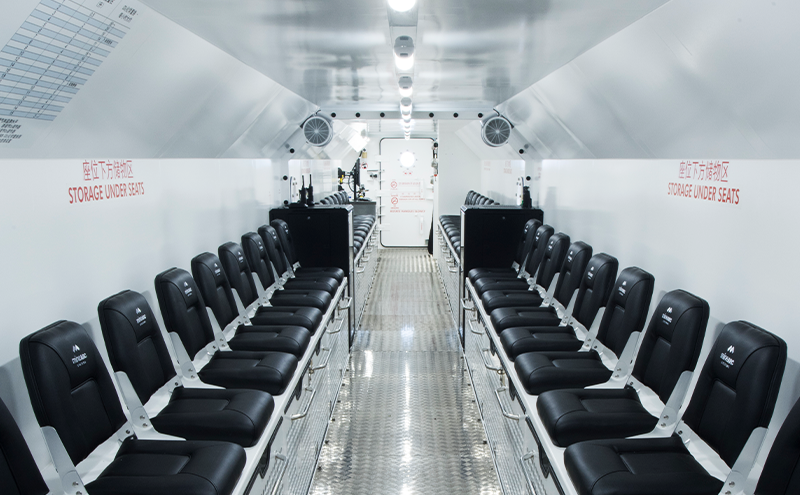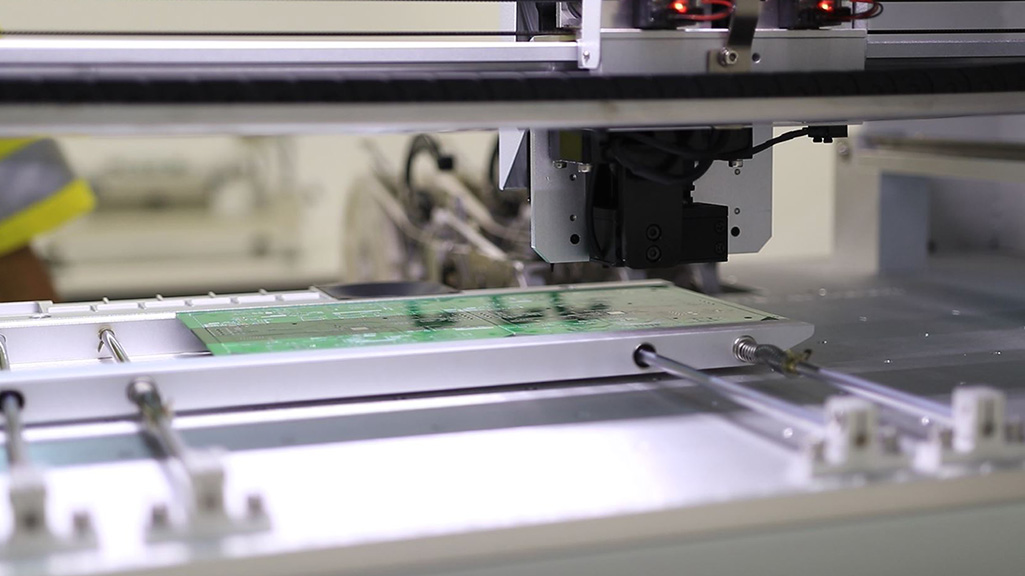No, a well-maintained refuge chamber or safe haven should not let gases inside.
A refuge shelter has two critical systems that work together to support an airtight environment: positive pressure and a robust, sealed structure.
Positive Pressure for Sealed Chemical Shelters and Refuge Chambers
Positive pressure works by maintaining a higher pressure within the shelter compared to the external environment. This difference means that air can leave the room, through the one-way check valves, without circulating back in.
There are a few mechanisms, each of which can help maintain positive pressure within a sealed MineARC Refuge Chamber:
- Compressed Air Management System
- Positive Pressure Maintenance System
- Automated Oxygen Delivery System
Leak Testing a Shelter
Integrity testing can identify leaks within a room before converting the area into a Shelter-in-Place (SIP).
Minimum air flow changes each hour (ACH) must be maintained to sustain the desired environment, depending on the room’s size and purpose. After reaching the required ACH or tightness, a positive-pressure management system must be sized for the expected shelter duration.
Breathable air from compressed air cylinders or an air line venting directly into the refuge forms a positive internal pressure. Determining the amount of air required to reach the necessary level of positive pressure involves measuring the area’s internal volume and the relationship between the internal and external atmospheric conditions.

How to Determine Adequate Positive Pressure
When determining adequate positive pressure within a space, several structural factors need to be considered, including:
- Shelter volume
- HVAC (Heating, Ventilating, and Air Conditioning)
- Door and window tightness
- Existing openings such as vents and elevator shafts
- Indoor and outdoor temperature
- Wind speed and building orientation
- The external screening of the structure
Structure Design for Airtight Safe Havens and Refuge Chambers
Portable or fixed refuge chambers are built from reinforced structures, either solid steel frames or natural rock strata.
Additional redundancies are included on leakage points to keep the environment airtight:
- Door seal: Every time the door is opened and closed, the seal will expand and compress. The seal is further mechanically compressed when the door handles are engaged, ensuring a seal under both positive and negative pressure.
- Check valves: One-way valves allow air to escape to avoid over pressurisation. These openings re-close automatically when the internal pressure is equal to or lower than the external pressure to maintain a sealed air environment.
Potential leakage points are continually serviced to ensure they remain effective.
Additionally, safe havens and shelter-in-place can be constructed within existing or new buildings. However, identified locations must undergo a review of the existing structure, building envelop, and the indoor atmosphere to determine its suitability to protect personnel during a hazard.
How to Check a Shelter is Airtight with a Vacuum Test
Any leak points must remain airtight. A field vacuum test confirms if these components are effectively maintaining an airtight internal environment.
A vacuum test is completed during refuge chamber manufacture. It should also be performed as part of every four monthly chamber service and regular inspections.






